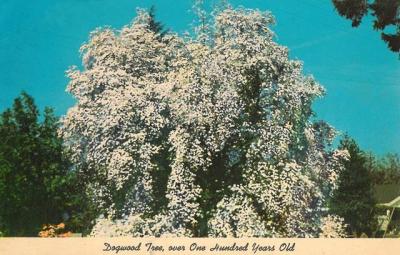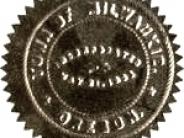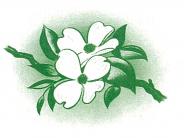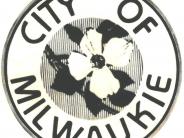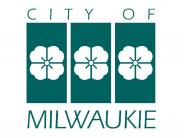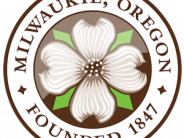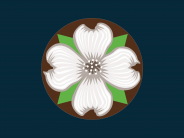- Neighborhoods
-
Community
-
- Overview History Vision Newsroom News Releases Pilot Newsletter Media Contact Projects Volunteer
- Engage Milwaukie Events City Calendar Recreation Biking in Milwaukie Parks and Trails Directory North Clackamas Parks and Recreation Reserve a Room Library
- Schools North Clackamas School District MHS Student of the Month Public Safety Police Clackamas Fire District #1 Code Compliance Emergency Preparedness Emergency Notifications Garbage & Recycling
-
- Business
- Departments
-
Useful Links
-
- Jobs Alerts & Notifications Email Subscriptions Emergency Notifications Meetings City Services A-Z Mapping & GIS
- Contact the City Staff Directory Request a Public Record Report a Code Violation Report a Pothole Report Misconduct Schedule an Inspection Documents & Forms Documents and Reports Forms, Permits, and Applications
- Helpful Links Digital Archives Library Catalog Municipal Code Purchase a Parking Permit Paperless Billing Pay a Ticket or Utility Bill Urban Forest
-
City Facts & Trivia
The Pacific Dogwood (Cornus nuttallii), the inspiration for Milwaukie's nickname, is native to western North America, growing from British Columbia to California and inland to Idaho. In 1962, when the Dogwood was officially adopted by the City, it was reported that Milwaukie was home to the oldest and largest Dogwood tree in the world.
| CITY FACTS | |
|---|---|
| Founded | Settled in 1847 Platted in 1849 |
|
Incorporated |
May 21, 1903 By Proclamation May 21st is known as "Dogwood Day". Beginning in 1985 the day has been marked by a Proclamation read by the Mayor. Visit the Dogwood Day webpage to learn more! |
| Form of Government | Council - Manager, adopted in 1944 |
| Named | By founder Lot Whitcomb after Milwaukee, Wisconsin |
| Location | 6.8 miles south of downtown Portland on the Willamette River in the northwest corner of Clackamas County, Oregon |
| Area | 5.09 square miles |
| Elevation | 43 feet |
| Population | 21,009 (2019) |
| Parks | 18 maintained by North Clackamas Parks and Recreation |
| Schools | 1 high school, 1 middle school, 4 elementary schools in the North Clackamas School District, and 1 college (Clackamas Community College) |
| Transportation | TriMet |
| CITY SYMBOLS | |
|---|---|
|
City Flower |
"The official flower of the City of Milwaukie shall be the Dogwood blossom (Cornus nuttalli, Cornus flrorida, Cornus florida rubra)" - Council Resolution 25-1962 The original "Official Dogwood" tree (see photo above) which stood at 65 feet tall with a girth of 7 feet, was badly damaged by the Columbus Day storm of 1962 and was cut down. Including the original tree, which was located on Harrison Street near 32nd Avenue at the home of former Mayor Shindler, there have been five "Official Dogwood" trees located on private property throughout the City. As of the 1990's only one remained standing. |
| City Nickname | "The official pseudonym (nickname) of the City of Milwaukie shall be The Dogwood City of The West." - Council Resolution 25-1962 |
|
City Logo |
In June 1903 Council unanimously agreed to have an official town seal created. The original seal featured simple text stating "Town of Milwaukie Oregon" with two stars around the outer circle and the words "Incorporated May 21, 1903" with an embellishment in the center. In the following decades the "City" replaced the word "Town" while the seal remained the same. In June 1962, acting on a recommendation from the Milwaukie Junior Chamber of Commerce, the Council adopted Resolution 25-1962 officially making the Dogwood blossom the City flower and "The Dogwood City of the West" the City nickname. Since then different versions of the Dogwood blossom have appeared on City stationary, uniforms, and vehicles. During the 1960's and 1970's two variations of the Dogwood blossom were featured, the earlier version was a green drawing of two blossoms and the later a blocked single Dogwood blossom. By the late 1980's the black-and-white blocked single Dogwood blossom image was flipped and incorporated into a seal format. In 1995 the logo was modernized to feature three Dogwood blossoms in rectangles in a horizontal row reflecting the City's street grid. Along with this logo, teal became the City's official color. In 2008 the City introduced a circular seal logo featuring a single updated rendering of the Dogwood blossom, and adopted brown and green as official colors. Along with a website refresh in 2017, the City adopted a cleaner version of the circular Dogwood logo. A new font was put in place along with navy blue as the City's primary branding color. |
| City Flag | The City Flag was updated in 2018 and features the City Logo on a blue background. See image slide show below. |
| Mayor's Gavel | Carved by Boy Scout Doug Rhodes, the Mayor's gavel is made from the wood of one of pioneer Seth Lewelling's original ornamental peach trees, which arrived as a seedling from China in 1869 and grew on the same block as City Hall before disease and rot took hold and the tree had to be removed in the 1980's. |
| CITY TRIVIA | |
|---|---|
|
Milwauk -ie |
"The earliest reference [to any location named Milwaukee] was in a 1679 journal of Father Zenobius Membre regarding Indians living at the mouth of the Milleoki River [in today's Wisconsin]... Strangely enough the Democrats [of Wisconsin] favored the "ie" and the Whigs liked the "ee". The Milwaukie Sentinel [of Wisconsin] changed to "ie" in 1841 and reverted back to "ee" in 1846, after Rufus King, a Republican, became the editor. Milwaukee (Wis.) used "ie" until 1843, as the city's postmark, but when Josiah Noonan, a Whig, became postmaster the spelling changed for mail to "ee". It was changed back when a Democrat took the position and later changed yet again to "ee" in 1861, and has remained... It is believed that [Lot Whitcomb] most likely adopted the spelling [for Milwaukie, Oregon] in use at the time of his visit [to Milwaukee, Wisconsin]." "Spellings of the two Milwaukees [in Wisconsin and Oregon] shifted, and confusion resulted. There are apocryphal stories that a flyspeck over one "e" settled the issue; that officials of the Oregon and California Railroad insisted upon a certain spelling for their station designation; that a practical joker pulled one on a Milwaukee, Wisconsin newspaper by stealing the "i" type of its rival forced the spelling. A more logical explanation is that the Post Office Department, conscious of the many mail misdirections, resolved the difficulty by placing in its Directory the designation of Milwaukie for the Oregon city. Its name seemed destined to remain in its present form." |
|
The Others... |
There are four U.S. cities pronounced Mill-wok-ee: Milwaukee, Wisconsin (settled 1818, incorporated 1846) Milwaukie, Oregon (settled 1847, incorporated 1903) Milwaukee, North Carolina (unincorporated community) Milwaukee, Pennsylvania (unincorporated community) |
|
Hail to the Chief! |
Presidential visits to Milwaukie... 1852: future president Ulysses S. Grant very likely passed thru Milwaukie as a young U.S. Army quartermaster stationed at Fort Vancouver and later as a former president concluding a worldwide tour with stops in Portland and Salem. 1888: future President Herbert Hoover, living in Oregon with relatives at Newberg, would often visit and work on his uncle Dr. John Henry Minthorn's land near Milwaukie. 1903: on May 21 - the day Milwaukie became a city - President Theodore Roosevelt passed through town on a train. The president was on a west coast tour and made speeches in Salem, Oregon City, and Portland that same day. While there is no evidence that Roosevelt stopped in Milwaukie, it's fun to know that the president passed through on the very first day of the city's existence! 1955: former President Harry and former First Lady Bess Truman visited Clackamas County on a retirement tour. 1960: presidential candidate John F. Kennedy visited State Senator Monroe Sweetland at the Milwaukie Review, met with students at Milwaukie High School, and stopped by several other Main Street businesses. 1968: presidential candidate Robert F. Kennedy visited northern Clackamas County on a whistle stop campaign tour. 2008: presidential candidate Barack Obama passed through Milwaukie on his way to a stop in Oak Grove. |
| Fly Milwaukie! | For 40 years local hardware store owner Zon Wells maintained an airstrip within Milwaukie known as Wells Field, or sometimes known as Wills Field. The dirt field ran east to west along Fieldcrest Street with a drop off at 42nd Avenue. In it's hey day, the "short field" was home to about 10 private planes that could transport a resident of Milwaukie to downtown Portland in minutes. Wells (Wills) Field was sold and developed into housing in the 1960's. Source: Centennial Memories (City of Milwaukie, 2003). |
|
Mil-WACKY Laws |
Ordinance 125 (1915) outlawed "expectorating", also known as spitting, on the floor in most public buildings and on sidewalks. Although it was repealed in 1964, please be courteous to your fellow Milwaukians and don't spit in public. Ordinance 161 (1918) laid out in detail how public dances were to be run and how to apply for a license to operate a dance hall. The ordinance described proper dancing between males and females and empowered an "Inspector of dance halls", appointed by the Mayor, to enforce the rules. The first dance hall license application, considered the same day Ordinance 161 was approved, from M. M. Ringler was approved on a 3-2 vote, with Mayor Snyder casting the tie-breaking vote in favor. However, the next day, at the request of the U.S. War Department which reported the prevalence of "immoral behavior" at the club, the Ringler dance hall license was rescinded. Ordinance 161 remained in effect for nearly five decades before being repealed by Ordinance 1070 in 1965. Resolution 5-1951 sought to promote wholesome and healthy youth activities by establishing a fish preserve for "juveniles under the age of fourteen" along Johnson Creek for the summer of 1951. No word on which juvenile caught the biggest fish in the creek... Ordinance 579 (1953) requires "a license from all persons engaged in the business of revealing or attempting to reveal the future events in another's life". At the time, it was reported that Milwaukie area fortune tellers of course saw this coming! |
Click any thumbnail image to view a slideshow

